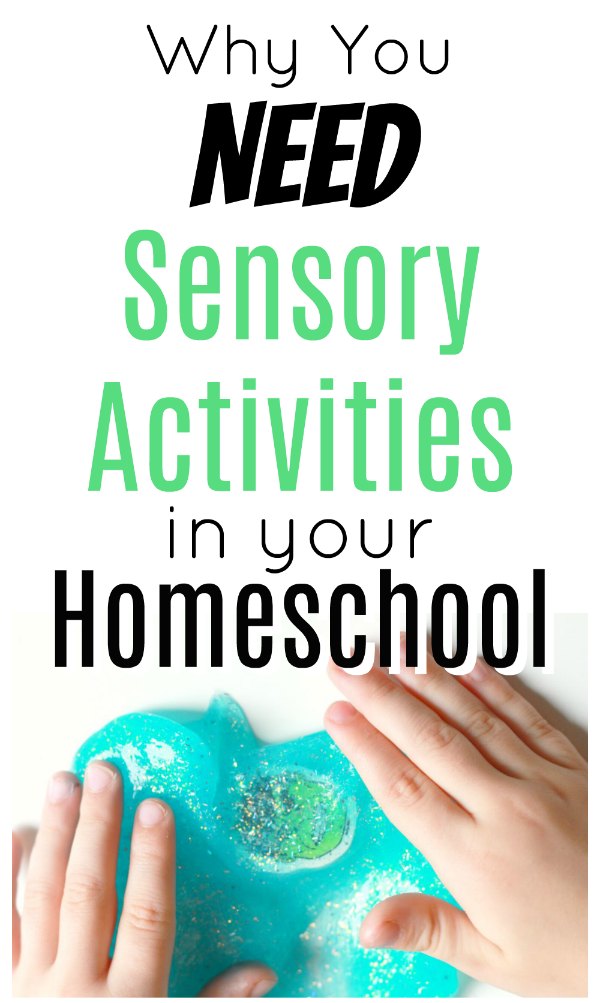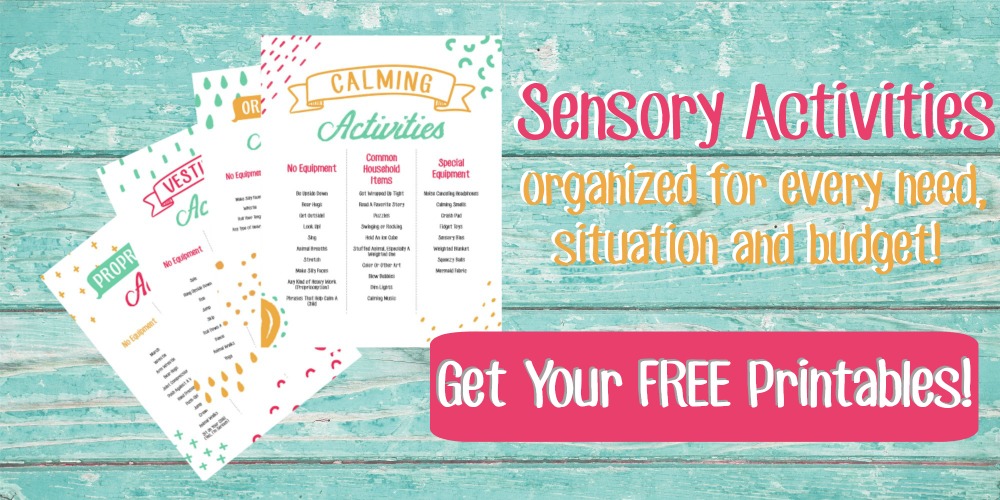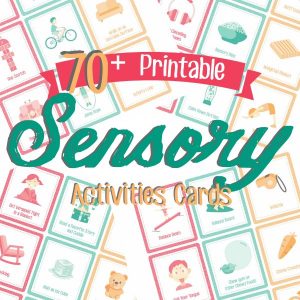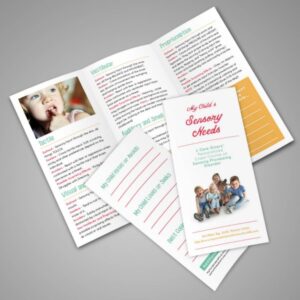If you homeschool or have looked into doing so for even a minute, chances are you’ve heard about “sensory play.”
What is it though, and why is it so important?
Here’s what you need to know. (And don’t forget to sign up at the end of the post to get free access to hundreds of sensory activities for every situation.)
What is Sensory Play?
Sensory play involves activities that stimulate and engage one or more of the seven senses (yeah, SEVEN!)- smell, sight, touch, taste, hearing, vestibular (inner ear), and proprioception (pressure and weight on joints and ligaments that provides body awareness). Most play is sensory in some way or another. However, with more recognition of sensory processing problems, many parents and educators specifically seek out sensory activities to expose their children to in order to help their development.
Why Sensory Play Matters
From birth onward, our senses are how we process information and learn about the world around us. Children need opportunities to engage these senses in order for their brains to develop – these activities actually help build neural pathways and connections. Sensory problems are strongly associated with other developmental conditions, particularly autism spectrum disorders.
Sensory processing disorder is a condition that causes problems with the way the brain receives and responds to this information. These problems can manifest differently in different people; one child may be overwhelmed by loud noises. Another might be sensitive to the way certain sensations feel against the skin. Others don’t register certain input and seek that sense out in agreesive ways like needing to spin, flap their arms or crash into everything.
Sensory play helps to encourage children to use their senses in challenging yet appropriate ways. These activities are tailored to the needs of the child – for example, a child who is oversensitive to sound might be introduced to soothing music or gentle noise. A child with an underdeveloped sense of touch would be encouraged to explore different tactile sensations by touching items that slimy, wet, soft, rough, and so on. And if you stick around here long enough, you’ll learn that proprioceptive input is king. Every single person on the planet could stand to get some more proprioceptive input. (Get a monster list of activities by signing up at the bottom of this post.)
Sensory Activities for Kids of All Ages
This post contains affiliate links for your convenience. Read my full disclosure policy here.
Need ideas for activities that explore the senses? Here are some ideas to get you started:
Soothing Sensory Activities
Children who are sensitive to certain sensory processes will benefit from soothing activities, such as:
- Heavy work like pull, pushing and climbing give the body proprioceptive input which is ESSENTIAL for normal body function. If your child struggles with meltdowns, or seemingly unrelated sensitivities, start here!
- Rocking and rhythmic play. Rocking slowly in a rocking chair or even simply rocking the body slowly is a soothing activity that teaches body awareness and balance. Adding a weighted blanket can make this activity even more conducive to producing a calm state.
- Sensory bottles or jars are often called “calm jars” for their calming effects on children. Make these by adding glitter, dyes, and possibly themed items to a jar with water. The child turns and watches the bottle for a time.
- Gentle music and white noise is helpful for children who are bothered by loud or competing sounds. You can find videos on YouTube that feature quiet nature sounds or even simply keep a fan running for the steady noise. It’s important to minimize other types of noise at the same time to achieve the calming effect. Noise reduction muffs are also helpful for these issues.
Stimulating Sensory Activities
Children with an underdeveloped response to certain senses will benefit from stimulating activities, such as:
- Quick, energetic rocking. Rocking in an unpredictable, fast way, on the other hand, can be a more stimulating activity. Spinning, jumping and hanging upside down are great ways to get the body revved up and ready to learn.
- Sensory bins vary widely – they typically include a filler material like beans, sand, or rice, along with small objects “hidden” in this material. These sensory bins naturally target the child’s sense of touch but many parents also target other senses using bins by incorporating essential oils for scent, bright or soothing colors, and materials that make specific types of sounds.
- Edible finger paint targets almost all the senses and is a wonderful tool for many children.
- Water balloon baths are simple to execute and add sensory stimulation to bath time – simply add colorful water balloons to your child’s bath and let them play and explore naturally.
As you can see, it’s incredibly easy to incorporate sensory activities into your homeschool. The benefits your child gets from these types of activities is beyond measure.
Want free access to hundreds of our family’s favorite sensory activities, all nice and organized so you all have an activity for every need and situation? Yeah. I thought so! Click here.









Leave a Reply